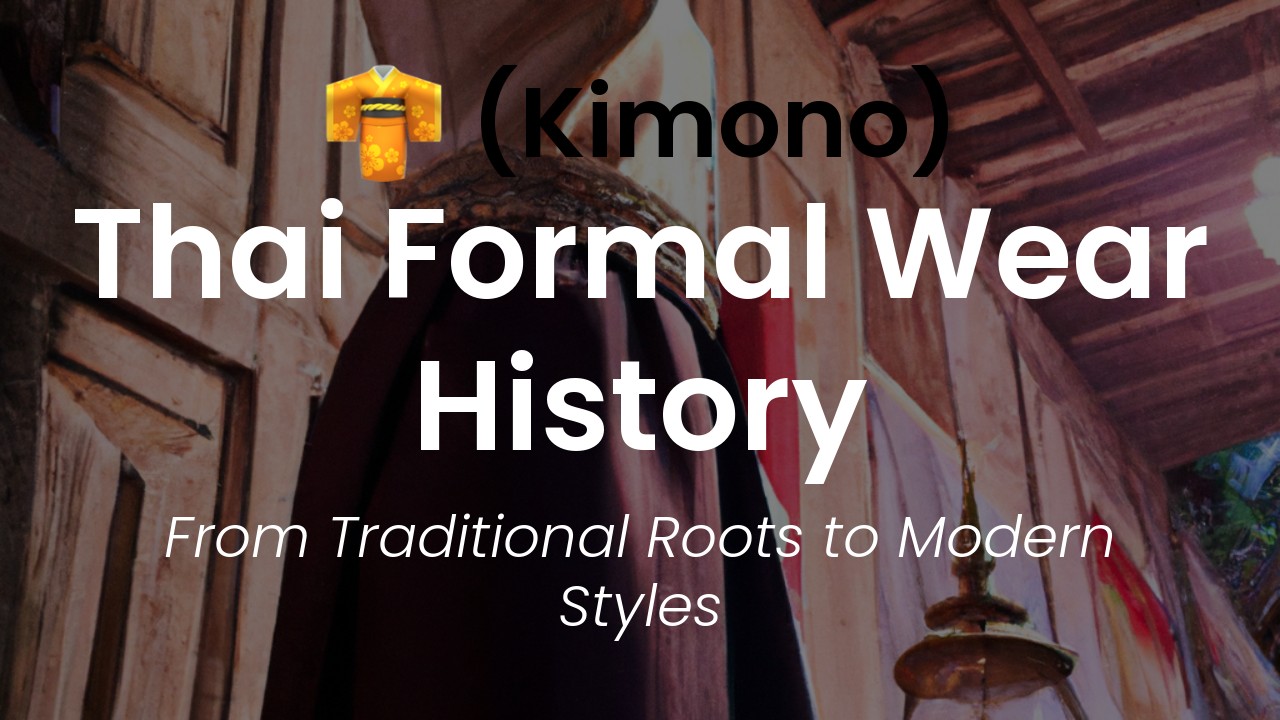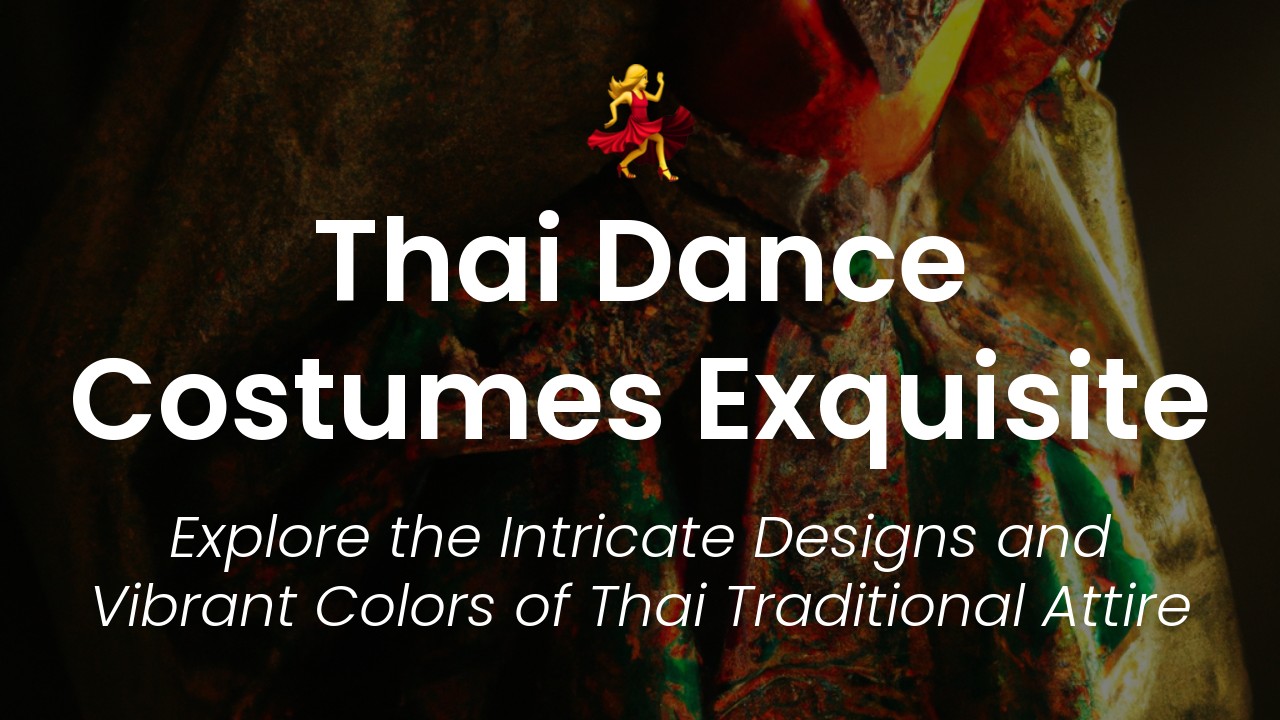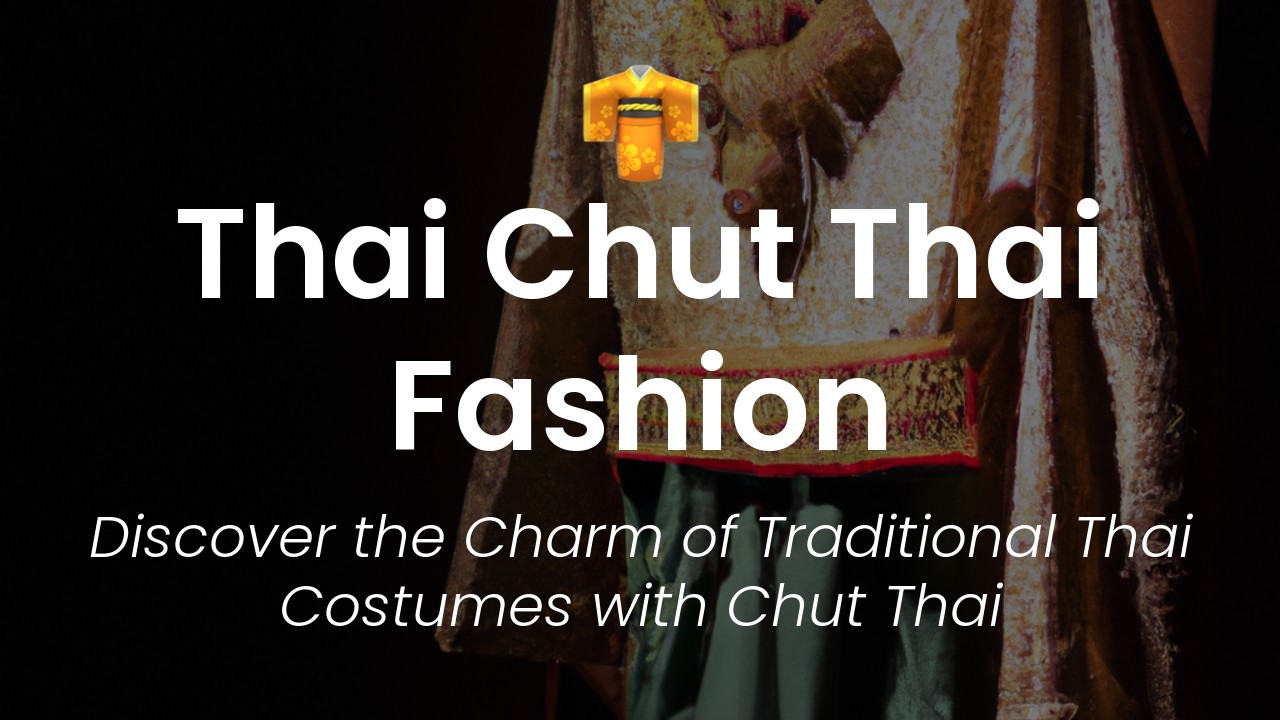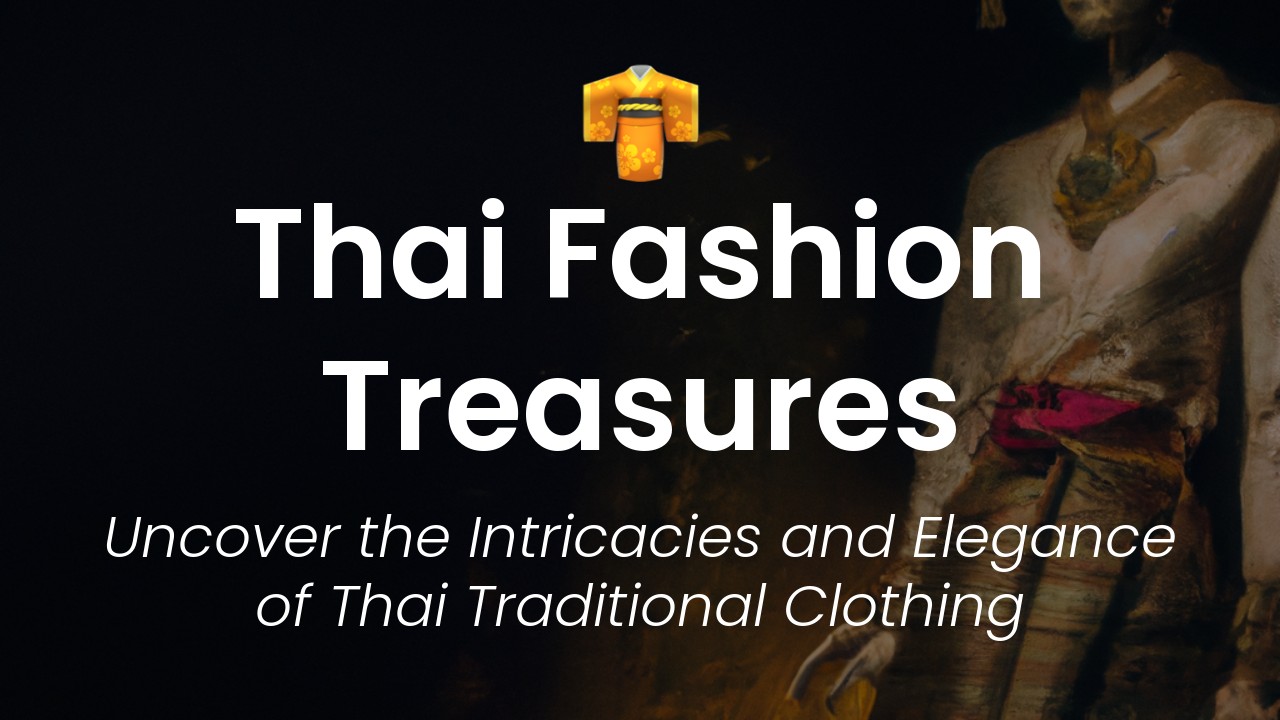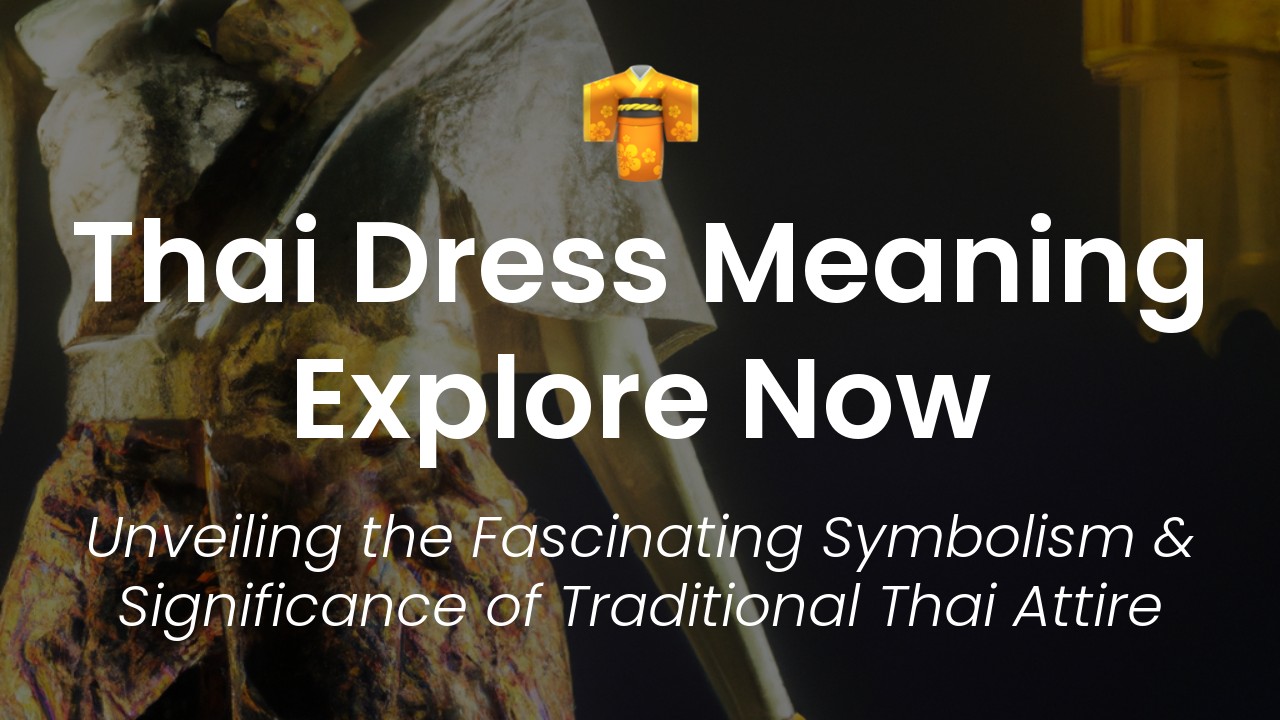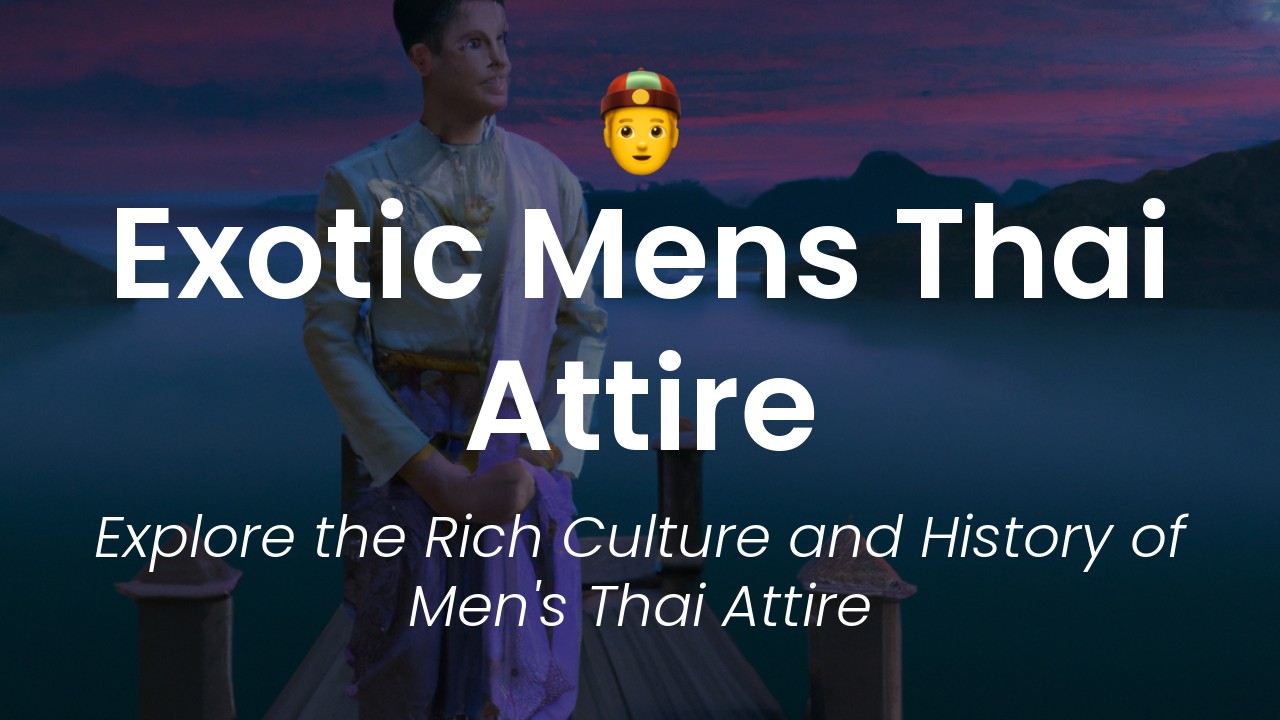As a Thai woman, traditional Thai formal wear has always fascinated me. The intricate designs and beautiful colors of these outfits are truly mesmerizing. The history and cultural significance of these pieces only add to their allure.
In this blog article, I want to take you on a journey through the fascinating past of Thai formal wear. From the early days of the Thai kingdom to the present day, we'll explore the evolution of these exquisite garments while learning about the cultural and social contexts that shaped them.
We'll start by looking at the origins of traditional Thai formal wear. The earliest form of Thai formal wear was likely influenced by India, as the kingdom of Funan, which was located in what is now Cambodia, had close ties with India. Over time, Thai formal wear evolved as the kingdom grew and interacted with other cultures through trade and diplomacy. By the time of the Ayutthaya period, which lasted from 1351-1767, Thai formal wear had become quite elaborate and distinctive.
Early Thai Attire
The traditional dress of Thailand has a rich history spanning many centuries, and it has undergone several significant changes throughout its evolution. Thai formal wear, in particular, has had an interesting past that is worth discovering.
The earliest attested form of Thai dress can be dated back to the Ayutthaya period, which ran from 1351 to 1767 AD. During this era, the garments worn by the noble and wealthy classes were called Chong Krabenk, which consisted of a long-sleeved, knee-length, and open-collar shirt paired with a matching sarong-like lower garment called Chong Krabak.
Introduction of Chinese Influence
In the late 18th century, the Ming Dynasty in China had a significant influence on the fashion of the Thai upper class. As a result, Chinese-inspired formal wear began to appear in the Thai courts. This included the traditional Chinese-style upper garment known as the Zhi Ping Pao, which had a high Mandarin collar and buttons down the right side. The lower garment adopted at the time was the Suea Pat, which was a type of loose-fitting trousers.
Another notable fashion trend popularized by the Chinese in Thailand were elaborately designed silk brocade fabrics, which became highly sought after by the Thai aristocracy.
Evolution of Thai Formal Wear
Towards the end of the 19th century, traditional Thai formal wear began to evolve more rapidly than ever before, as the country increasingly adopted western attitudes and customs. This led to a fusion of western and eastern styles, resulting in a distinctly Thai type of formal dress.
This new style of dress featured a long-sleeved, button-up blouse with western-style pleats known as the Chong Kabaong, paired with a billowing silk sash called a Sabai. The Shen was another type of garment added, which was a long tube skirt with elaborate gold embroidery often reserved for festival outfits.
Details & Accessories
Details were also added to the outfits, such as a gold sash worn with the traditional "Chong Kraben" and elaborately embroidered fabrics used for the clothes themselves. Jewelry played a significant role in completing the look, and members of the Thai court would often adorn themselves with an enormous amount of gold.
One of the most distinctive accessories was the pha nung, a wrap-around layer of fabric worn by Thai women of the court which had intricate details and was often made of silk.
Importance & Symbolism
Formal wear in Thailand has long been viewed as a symbol of status, power, and wealth. Court dress helped to differentiate members of the aristocracy from other ranks of Thai society.
The colors of Thai formal wear also held significant importance and were an essential factor in distinguishing the wearer's social class. In the past, the royal court had established strict guidelines of dress codes, ensuring only those of appropriate rank wore specific colors.
For instance, red was reserved only for the King and his immediate family. Yellow indicated royalty, and blue was for high officials and court members. Meanwhile, the color white was strictly reserved for mourning attire.
Modern Updates and Trends
In modern times, formal wear in Thailand has become more casual, especially among the younger generation. However, the traditional elements are still present, especially in formal events such as weddings, religious ceremonies, and visits to the Royal Palace.
Some Thai designers today have added contemporary twists on traditional formal wear, incorporating modern designs and unconventional fabric choices while keeping Thailand's rich cultural heritage at the forefront.
Influences on Global Fashion
Thai traditional formal wear is highly distinctive and has many unique features. The intricate embroidery, luxurious silks, and delicate details have become increasingly popular across the globe, and today many fashion designers use Thai fashion as inspiration for their work.
In conclusion, Thai formal wear is rich in history, with influences ranging from China to the western world. The evolution of Thai formal wear has been fascinating, reflecting the country's changing attitudes, customs, status, and power. Although modern times have seen a more casual approach to dress, the traditional elements of Thai formal wear remain an essential part of Thai cultural heritage.

